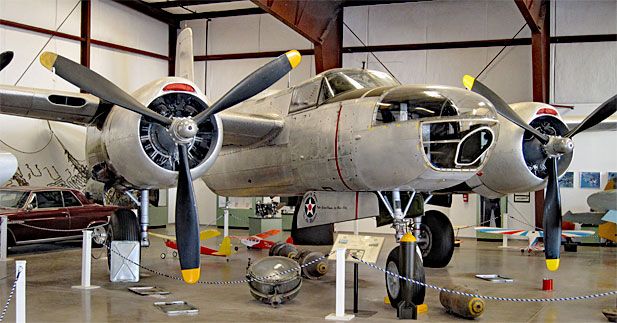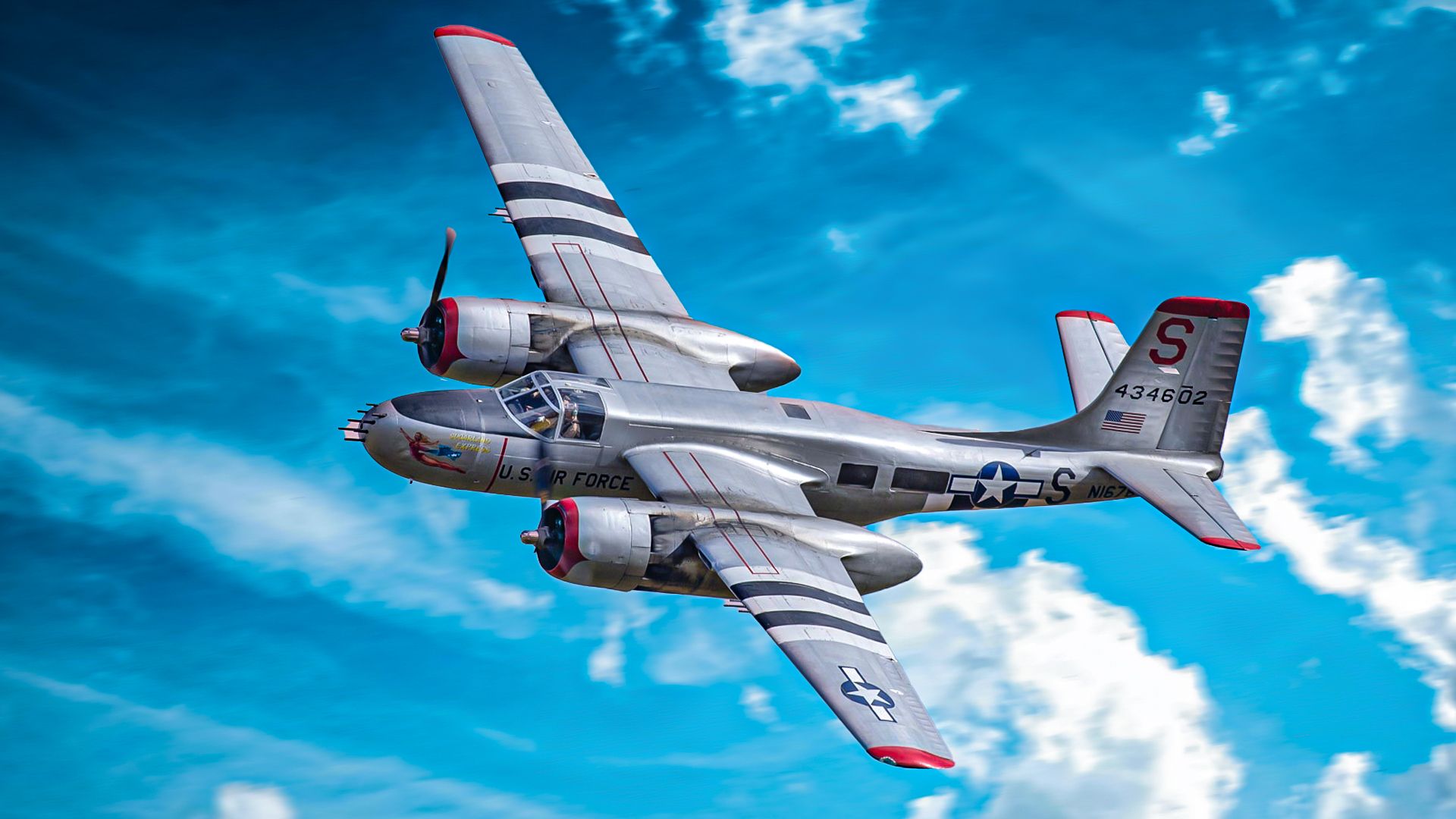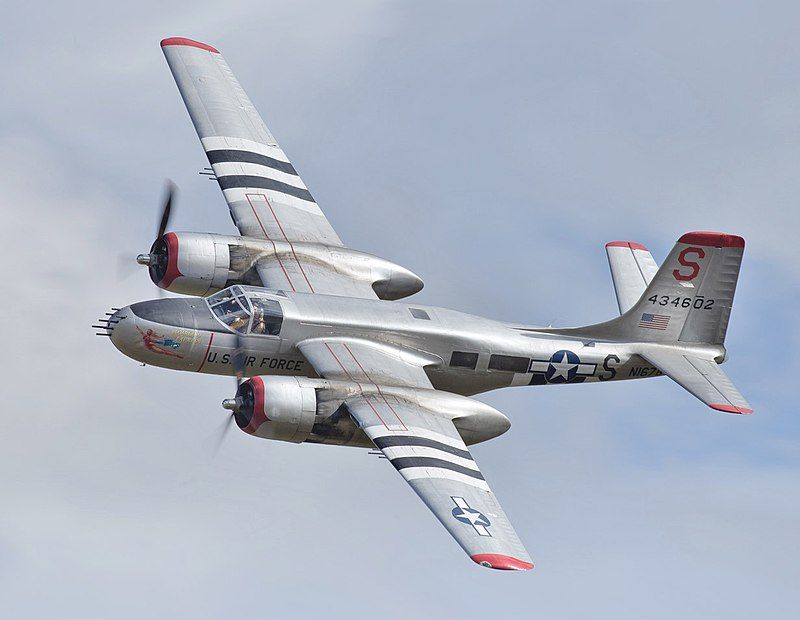Summary
- The WWII A-26 Invader had a complex history, serving in several wars with mixed reception among aircrews.
- Key A-26 restoration projects in Utah and California (via Arizona) aim to restore and preserve the last remaining Invaders built.
- Restoration efforts for these vintage planes are ongoing by a dedicated team of volunteers on both projects.
As our regular readers have probably already surmised from one of my recent Simple Flying articles, I’m a major proponent of vintage military restoration projects being carried out by worthwhile entities including (but certainly not limited to) the Commemorative Air Force (CAF). Admittedly, I’m a tad biased here, as not only am I a longtime CAF donor (and damn proud of it), but indeed a CAF beneficiary, having ridden in both a World War II-era Boeing B-17 Flying Fortress and a North American B-25 Mitchell AKA PBJ that CAF restored.
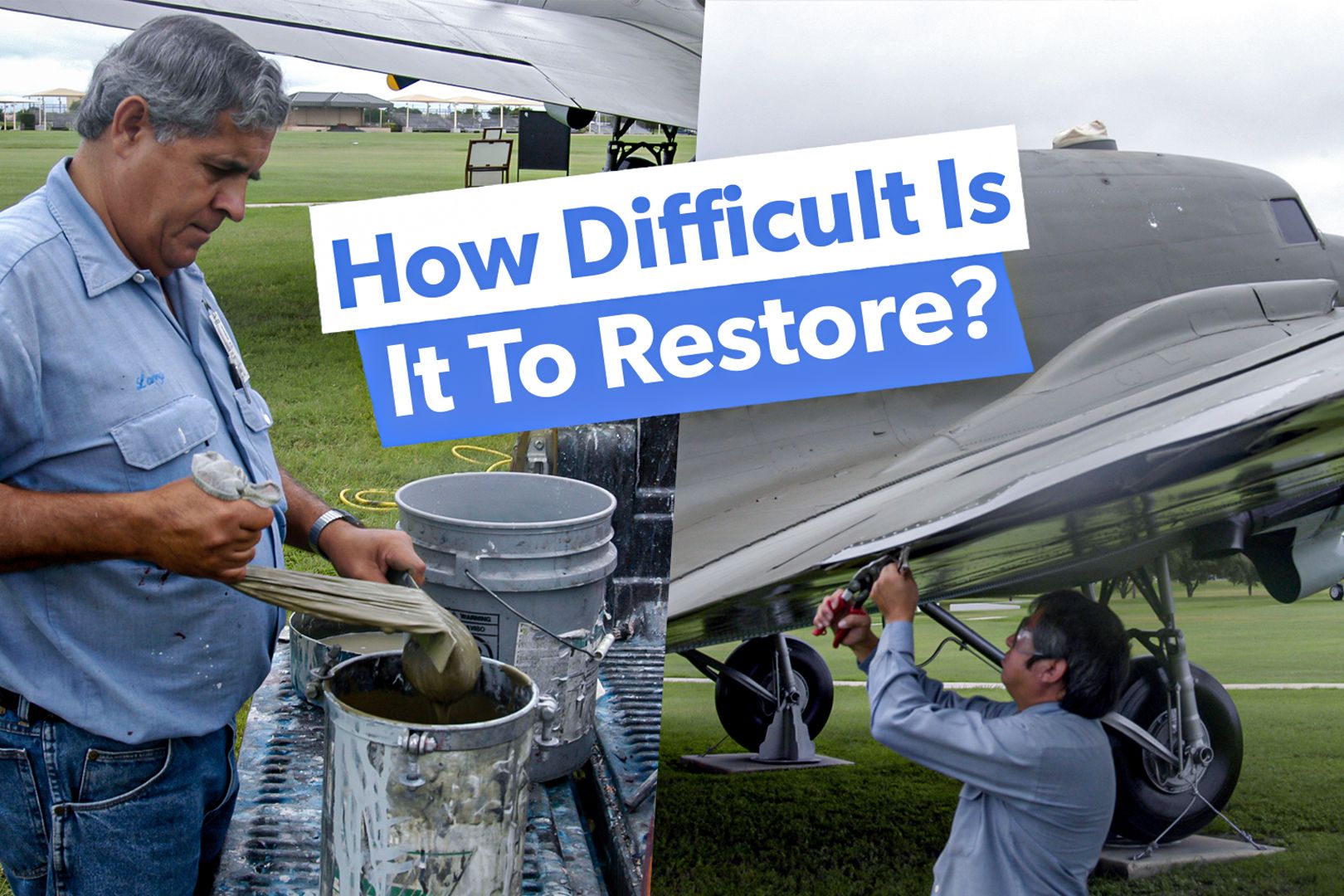
Related
How Difficult Is It To Restore A WWII Plane?
Quite difficult, but ultimately rewarding: Simple Flying gets some firsthand perspectives on these worthwhile projects.
Toward the end of that article, I made a single bullet-pointed reference to an A-26 Invader (another WWII bomber) restoration project taking place in Provo, Utah. It’s time now to discuss that worthwhile project in greater detail, as well as a concurrent A-26 restoration project in the neighboring American state of Arizona.
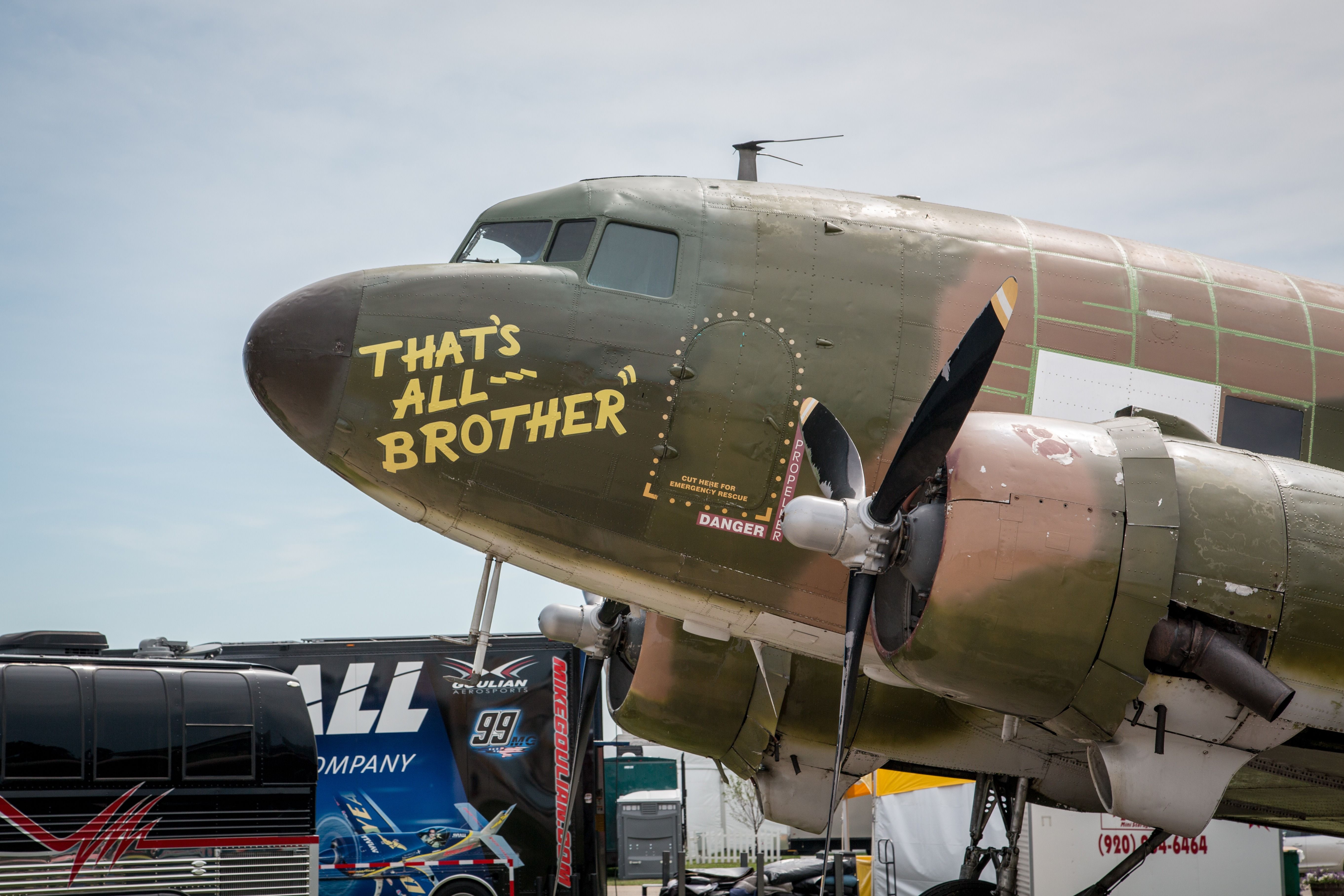
Related
That’s All Brother: How The Formation-Leading Douglas C-47 Was Discovered & Restored
That’s All Brother was the leading aircraft during the D-Day invasion.
A-26 Invader brief history and specifications
Before we get into the specifics of the A-26, I reckon a brief general history of the warbird type is in order.
The A-26 Invader was a light bomber (for the sake of comparison and contrast, the aforementioned B-17 and B-25/PBJ were designated as a heavy bomber and medium bomber, respectively) and ground attack aircraft that made its maiden flight on July 10, 1942, and entered into official operational service with the United States Army Air Forces (USAAF) in 1944. The plane was manufactured by Douglas Aircraft, which also made such legendary WWII warbirds as the Douglas SBD Dauntless dive bomber (one of my Top 2 personal favorite warplanes of all-time) and the C-47 Skytrain AKA Dakota.
The Invader served with distinction in WWII, the Korean War, and even the Vietnam War. Interestingly, the bomber was unpopular with American aircrews in the European Theater of WWII but, conversely, quite well-liked by their Pacific Theater counterparts. One Pacific-based unit in particular, the 9th Air Force, flew 11,567 sorties with the B-26, dropping 18,054 tons of bombs and recording seven confirmed air-to-air kills while losing 67 aircraft.
Two years after the end of WWII, when the USAAF’s successor, the US Air Force (USAF) became a separate and independent branch of service, the A-26 was rebranded the B-26, which can get a wee bit confusing, as the WWII USAAF had its own B-26, namely the Martin B-26 Marauder medium bomber, whose photo graces the top of our recent article on the 80th anniversary of D-Day (but then again, the US Armed Forces have had more weapons systems designated “M1” and “M2” alike than you can shake a stick at; gotta love military semantics, eh):

Related
D-Day 80th Anniversary: The Key Role Of Airpower In The Allies’ Success
Today is the 80th anniversary of D-Day, with airpower having played a crucial role in the success of this Allied effort.
|
Crew: |
3 (pilot, navigator/gun loader/bombardier, rear gunner) |
|
Fuselage Length: |
50 ft (15 m) |
|
Wingspan: |
70 ft (21 m) |
|
Height: |
18 ft 6 in (5.64 m) |
|
Empty Weight |
22,370 lb (10,147 kg) |
|
Max Takeoff Weight: |
35,000 lb (15,876 kg) |
|
Max Airspeed: |
359 mph (578 km/h, 312 kn) at 16,700 ft (5,100 m) (normal rated power) |
|
Combat Range: |
700 mi (1,100 km, 610 nmi) |
|
Service Ceiling: |
28,500 ft (8,700 m); 14,400 ft (4,400 m) on one engine |
|
Armament: |
|
The last military service to retire the A-26 was the Colombian Air Force, doing so in 1980 (quite a testament to the airframe’s longevity and durability). Out of a total of 2,503 Invaders built, approximately 97 still survive today in varying statuses (Airworthy, Display, Stored, Under Restoration)…which brings us back full circle to the restoration projects mentioned at the beginning of this article (not to mention the title)…
A-26 restoration project #1: Provo, Utah
As promised, it’s time to finally expand on this story. The Invader in question is an A-26B variant, Serial No. 44-34774, and it’s believed to be the last complete Douglas A-26 Invader ever produced. Stephen Chapis of Vintage Aviation News elaborates further in an April 2024 post:
“This aircraft…holds a unique distinction. This aircraft was in the last batch of ten Invaders built and when it takes to the skies again it will be the youngest airworthy Invader. It currently stands as the second youngest airframe in existence. When ‘774 left Long Beach in October 1945, it was flown directly into storage in Kingman, Arizona. When it was sold to its first civilian owner, Standard Oil Company, on September 26, 1946, it had less than nine hours on the airframe.”
Among the members of the small team of volunteers restoring #44-34774 are co-owners Messrs. David Fronk and Peter Garraty, along with Bob Schroeder. Among the quotables from Bob Schroeder:
[At the beginning of the project] “I thought, ‘Holy mackerel, what have we done?’ There had been a lot of work had already been done and that was a godsend. Probably the first six or seven years of a project like this, you’re saying, ‘We’ll get this done in two years.’ It never happens.”
[On the “glorious day” that the bomber’s flaps finally became operational] “They work absolutely perfect [sic]. The flaps on this airplane, they’ve got to be the eighth wonder of the world.”
Meanwhile, Dave Schroder added his thoughts on all the travail that went into getting those flaps to work:
““It was a game. A puzzle. It was a real circus putting those together because when two bolts pass each other, they’ve got to be in the right direction, or they will contact each other and stop the flap. We had all of those little learning experiences…”
Stephen Chapis concludes the article by stating that Bob and Dave do not plan to rush anything, but they hope nonetheless that they will be able to have made enough progress on the warbird to a point where they can perform taxi tests in time to celebrate its 80th birthday.
A-26 restoration project #2: Chino, California via Valle, Arizona
To be more precise, the Planes of Fame Air Museum, whose main branch (the one that’s currently open to the public) is located in Chino, CA, but whose restoration facility is ensconced in Valle, AZ.
This particular magnificent specimen is an A-26C variant affectionately renamed “Miss Victory,” originally built in March 1945. “Miss Victory” is a veteran of both WWII and Korea. After its military career ended, this plane found a second career as a lifesaver rather than a life taker, namely as a “fire-bomber,” fighting fires in Canada, Alaska, and the Pacific Northwest region of the US It was donated to the Planes of Museum and had been on static display since, but the decision to restore the old girl to airworthy condition was a fairly recent one. As the project director, Jeff Whitesell, stated in the above-embedded video, published on September 1, 2022:
“And I can’t think of a better time right now, or a better *way*, perhaps, to salute the veterans of three wars all at once.”
The Museum is currently soliciting donations for the restoration of “Miss Victory;” readers wishing to financially support this project can find donation info via either the Museum website hyperlink or the YouTube video description.
